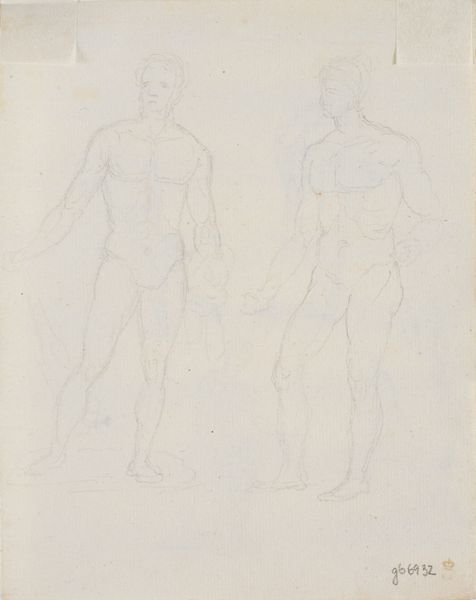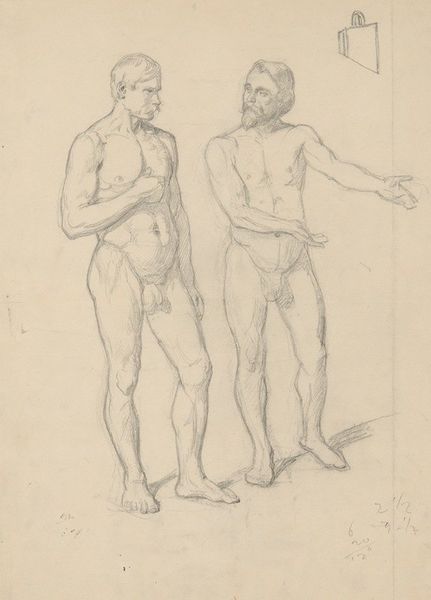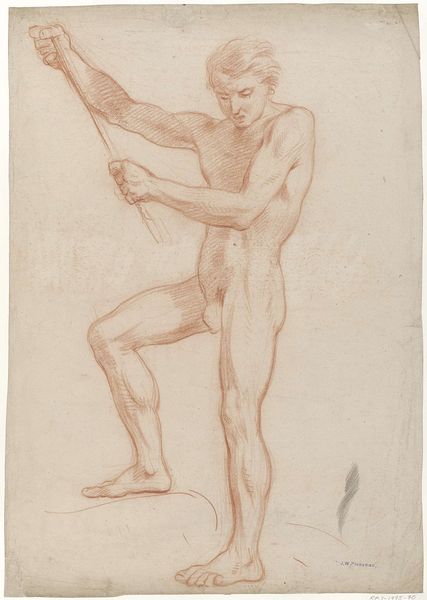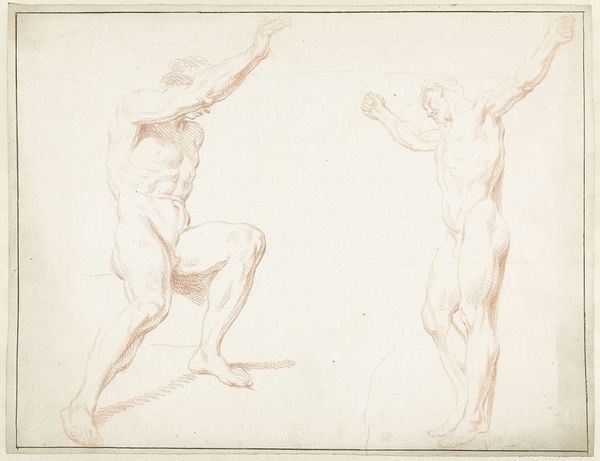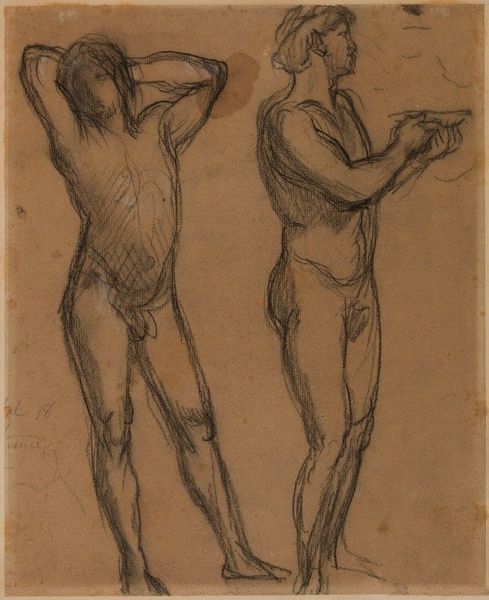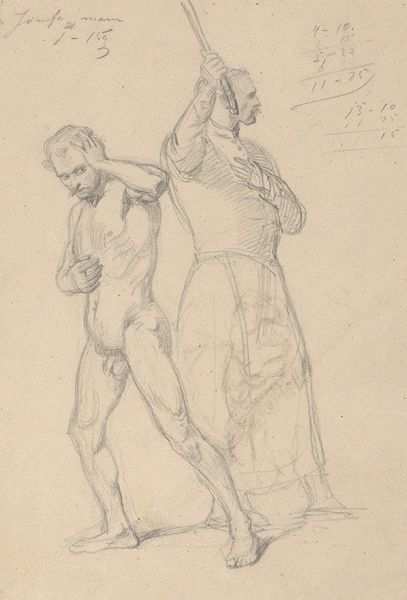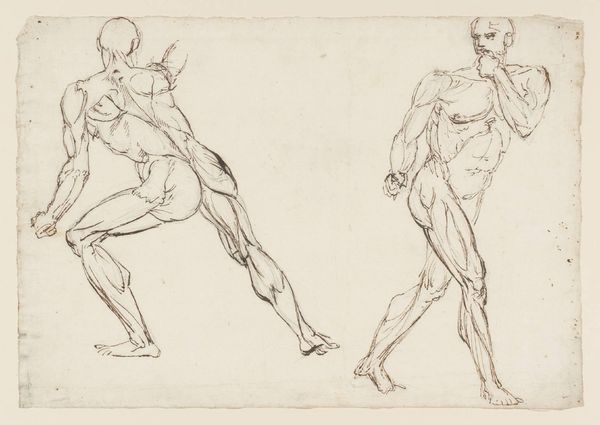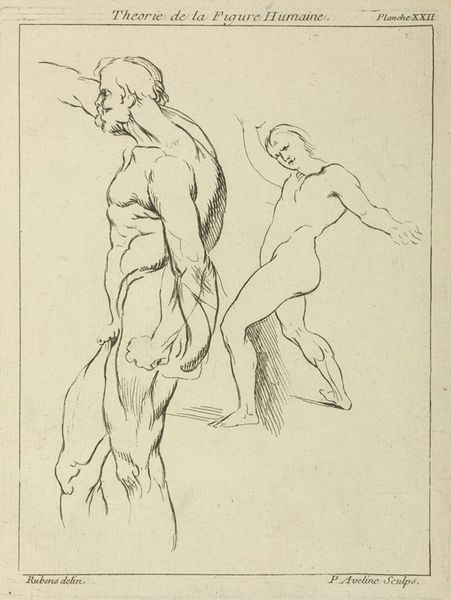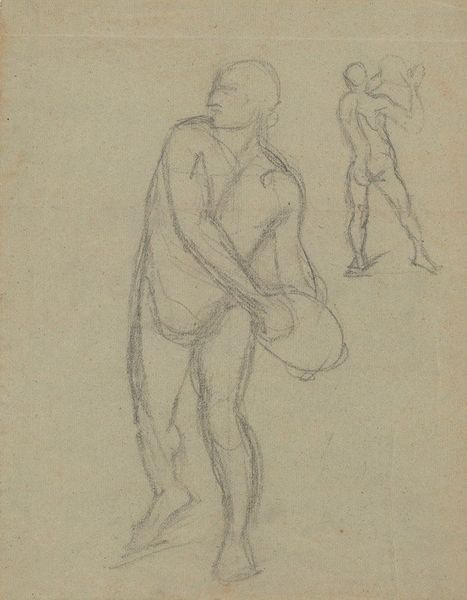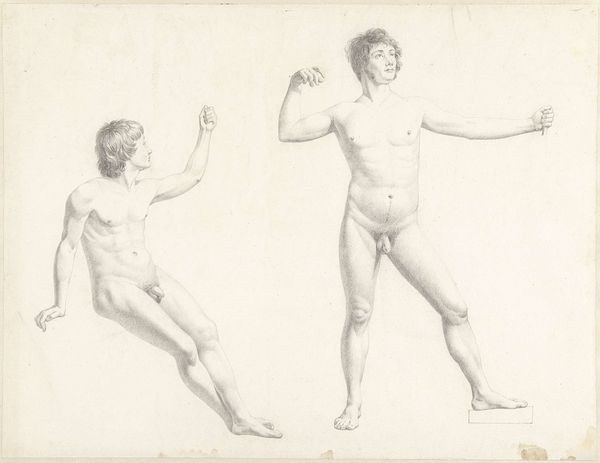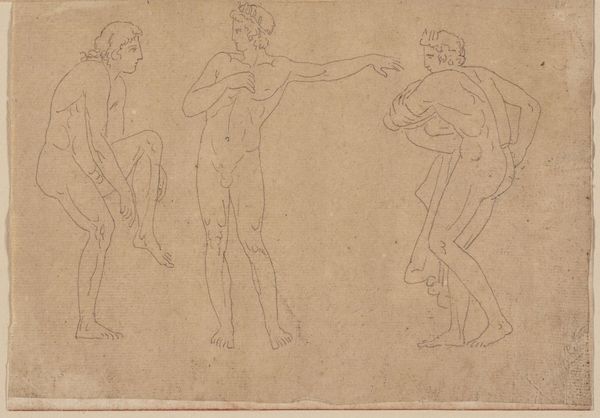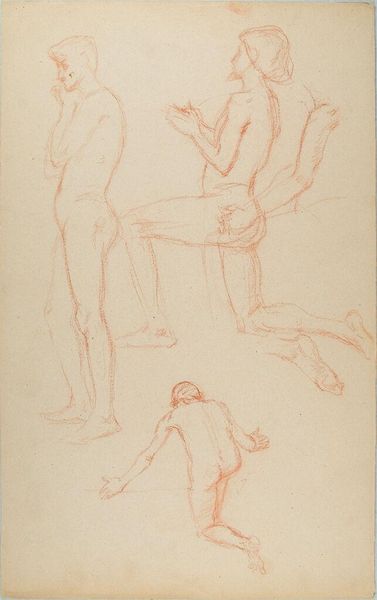
Studies of nude males to the painting ‘Martyrdom of St. Josaphat Kuntsevych’ 1861
0:00
0:00
drawing, pencil
#
drawing
#
figuration
#
pencil
#
academic-art
#
nude
Copyright: Public Domain: Artvee
Editor: Here we have Jozef Simmler's 1861 pencil drawing, "Studies of nude males to the painting ‘Martyrdom of St. Josaphat Kuntsevych.’" The figures almost appear trapped by the very delicate lines, which evoke an ancient statue being released from stone. What do you make of the way Simmler uses these figures to explore the concept of martyrdom? Curator: Consider how the artist employs the visual language of the male nude—often associated with strength, virtue, and idealized beauty since classical antiquity—but then imbues them with gestures that hint at violence, at constraint. Notice how the delicate rendering also invites the viewer to see through to the 'bones' of the narrative. Do you think the figures themselves, in their implied tension, tell a story? Editor: I suppose there’s an unsettling vulnerability being hinted at, even though their poses suggest some level of physical exertion. It challenges traditional heroic depictions. Is this typical for preparatory sketches, to hint at the drama through the body itself? Curator: Very astute. Preparatory drawings can be fascinating precisely because they expose the artist’s thinking. In this instance, we see the martyr’s impending suffering visualized through the tense bodies. It allows for the exploration of faith and sacrifice that goes beyond simple triumph or stoicism, revealing more complex, human reactions. Editor: So the tension lies in the figures themselves acting as both the ideal and the sacrifice. That contrast certainly amplifies the emotional weight. Thank you. Curator: It invites us to consider how physical forms, often presented as ideals, can be reshaped to reflect profound narratives of suffering and spiritual transformation. Something to meditate upon.
Comments
No comments
Be the first to comment and join the conversation on the ultimate creative platform.

